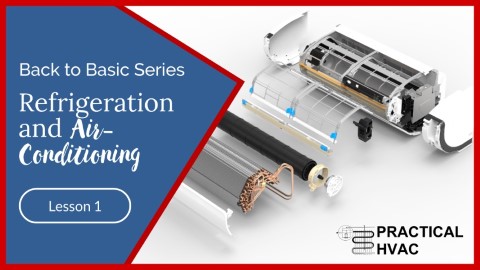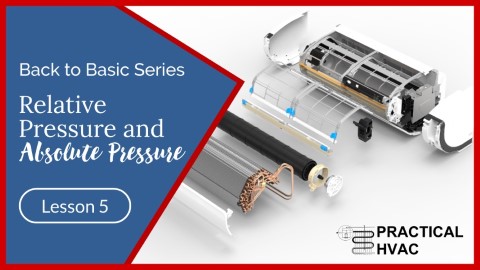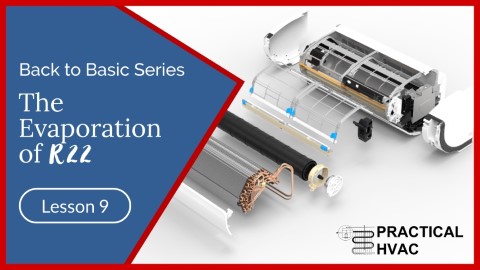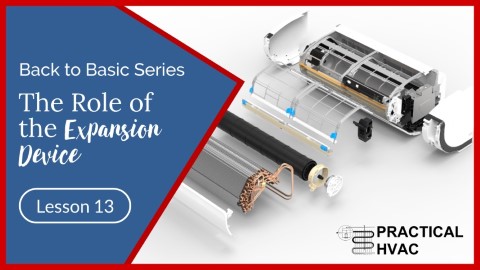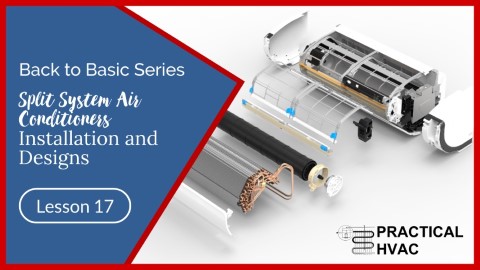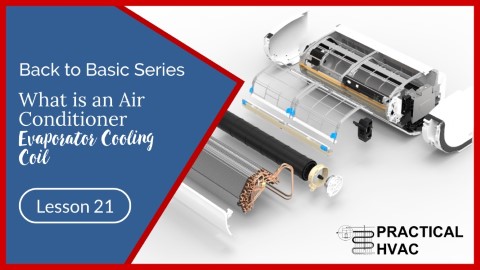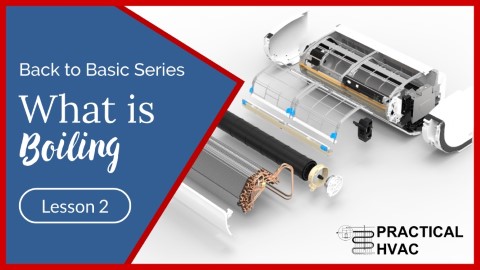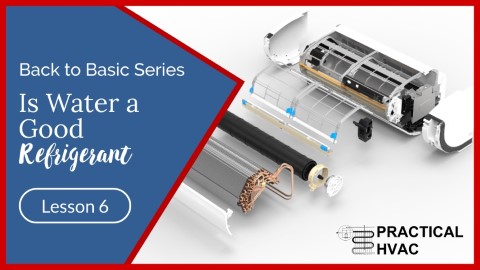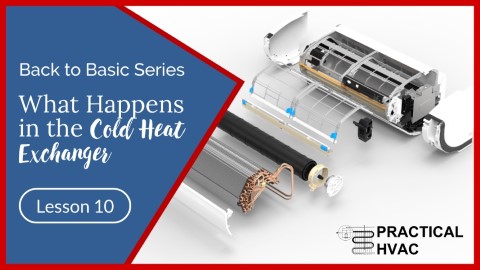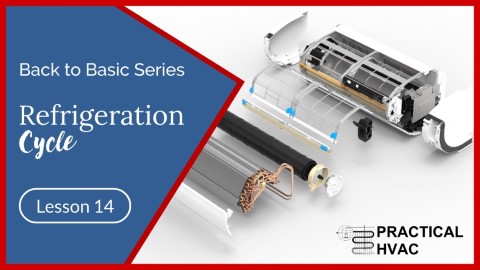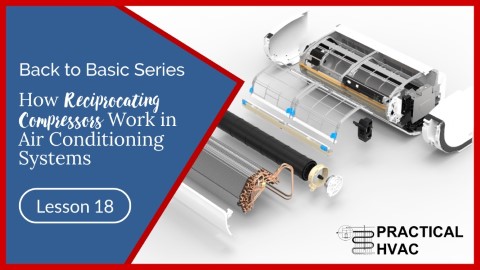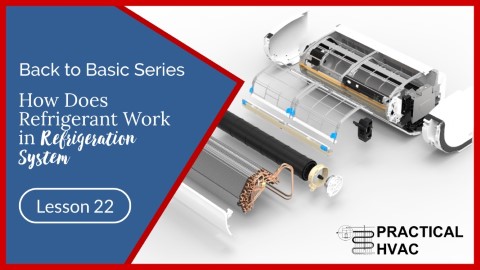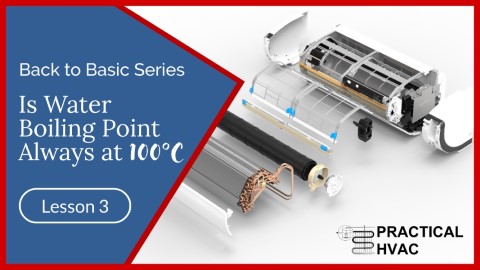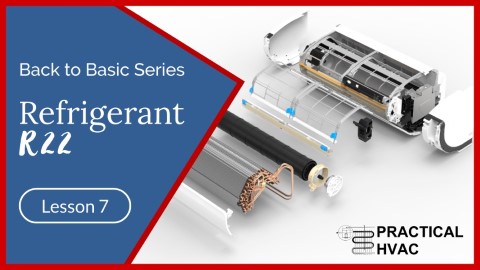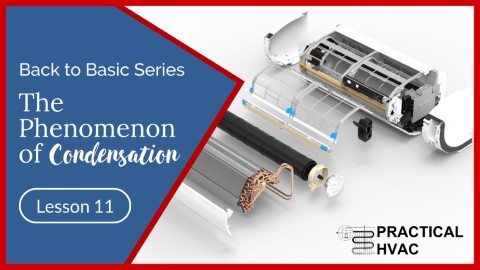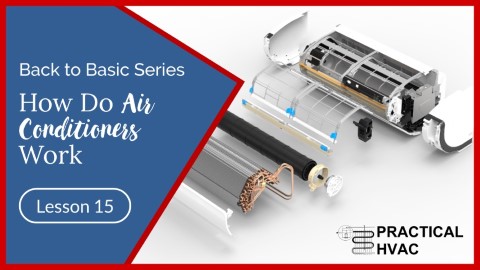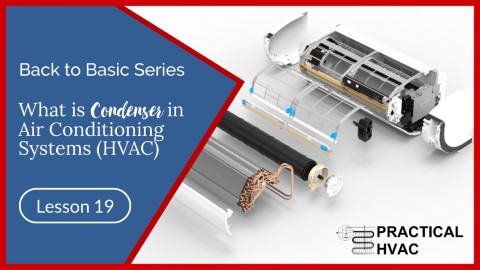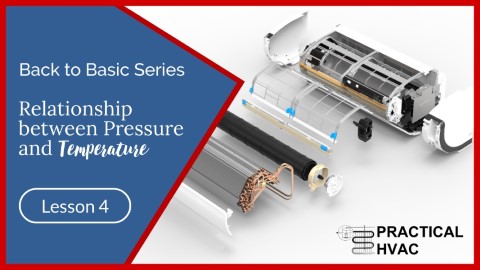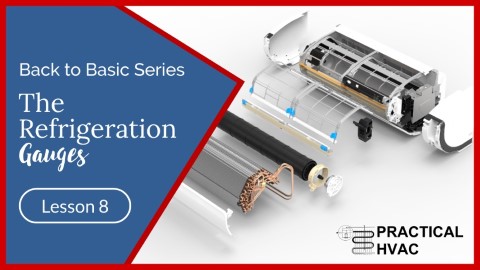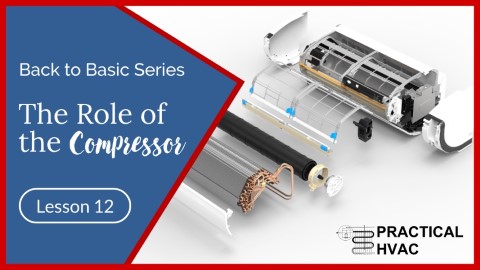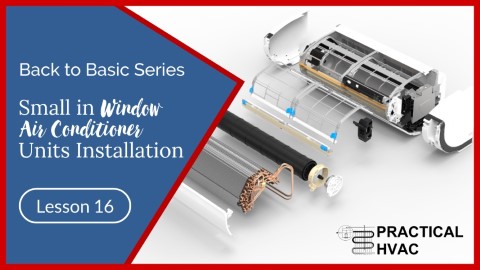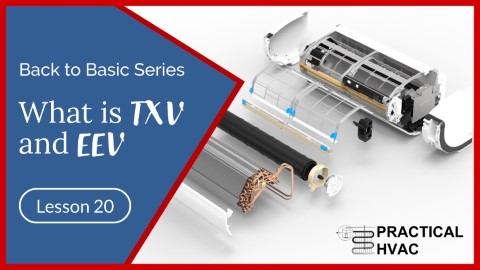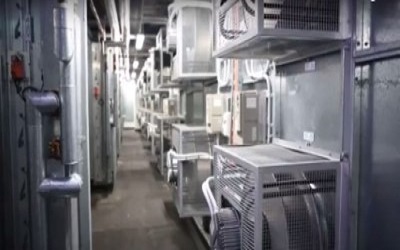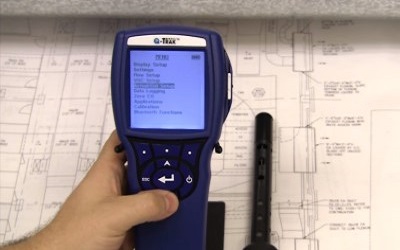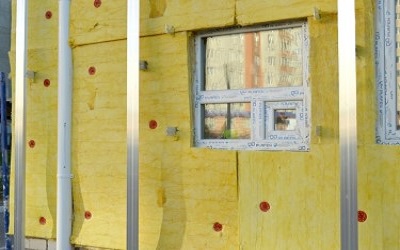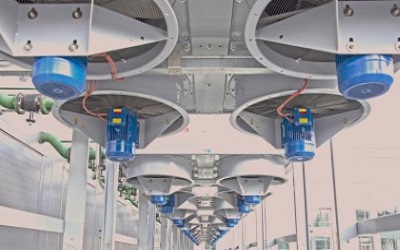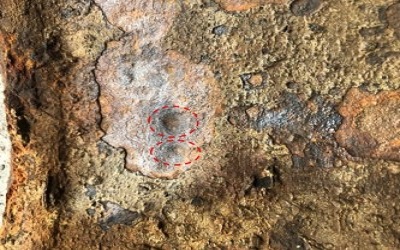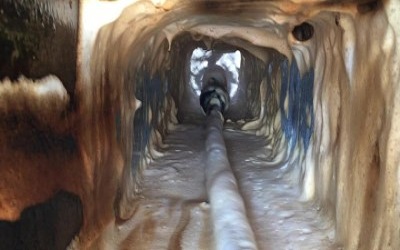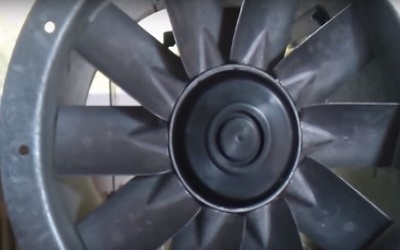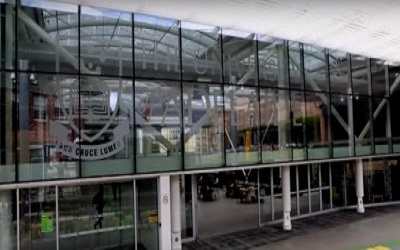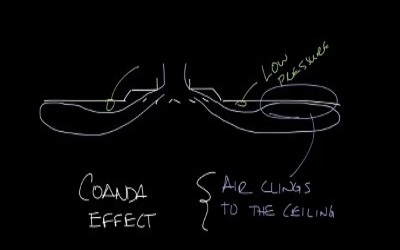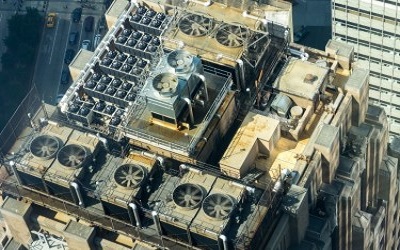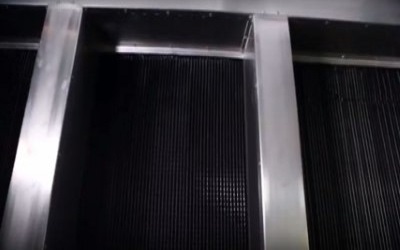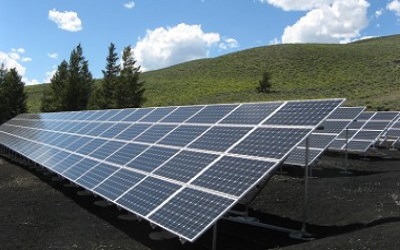How Does Refrigerant Work in Refrigeration System
How Does Refrigerant Work in Refrigeration System
Here are some typical operating conditions. As pressures differ from refrigerant to refrigerant, we must commit temperatures to memory.
LP Side (Low pressure)
Temperature of the air at the evaporator inlet: Tai ~ 24°C.
ΔTtotal at the evaporator ~ 18°C (normal value 16 to 20°C).
Evaporation temperature To = Tai – ΔTtotal = 23 – 18°C = 5°C.
Low pressure shown on LP gauge: Pg ~ 4.8 bar which is only applicable for R22 refrigerant.
Superheat = 5K (normal value 5 to 10K)
HP Side (High pressure)
Temperature of the air at the condenser inlet: Tai ~ 30°C.
ΔTtotal at the condenser ~ 15°C (normal value 10 to 20°C).
Condensation temperature Tk = Tai + ΔTtotal = 30 – 15°C = 45°C.
High pressure shown on HP gauge: Pg ~ 16.3 bar which is only applicable for R22 refrigerant.
Sub-cooling = 5K (normal value 4 to 7K)
As we’ve already seen, the compressor’s role is to draw refrigerant from the LP side and discharge it on the HP side.
You must understand that the compressor doesn’t control the LP and HP pressures. Instead, pressures depend on ΔTtotal of the evaporator (for the LP) and ΔTtotal of the condenser (for the HP). And the air temperature at the inlet of each of these heat exchangers.
During the 80s, piston compressors were typical in comfort air conditioning. Since then, other types, such as rotary and scroll compressors, have become predominant because of noise levels and for performance and reliability reasons.
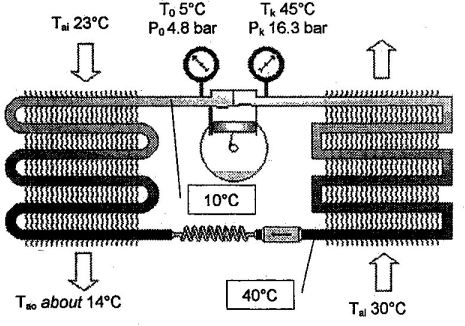
However, whatever the technology involved, the same HP and LP pressures are always a result of the system’s operating conditions.
We can represent these operating conditions as shown in the diagram.
You’ll observe that LP is 4.8 bar and HP is 16.3 bar.
Note that we’ve shown the energy required per kg of refrigerant in the system.
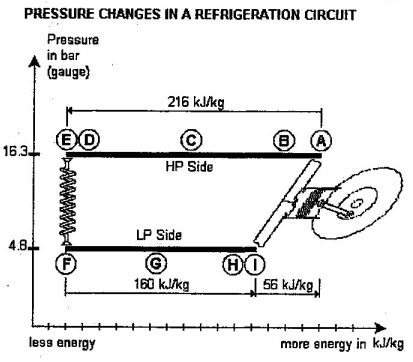
END OF SECTION
Back to Basic!
Related
Read more: Fan wall
Read more: How to verify the percentage of outside air in an enclosure
Read more: BCA Part J5 Air-conditioning system control
Read more: Microbial Induced Corrosion (MIC) in Pipes
Read more: Is your kitchen exhaust system a fire hazard
Read more: What is coanda effect
